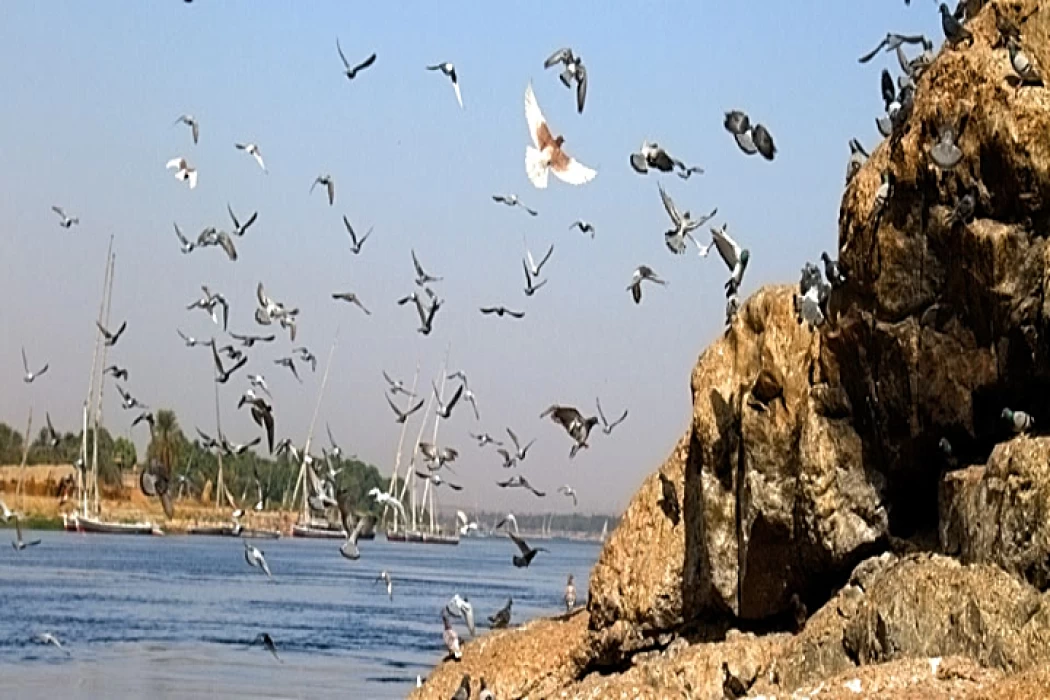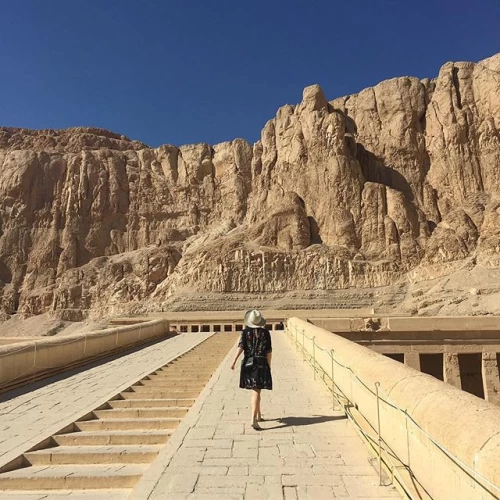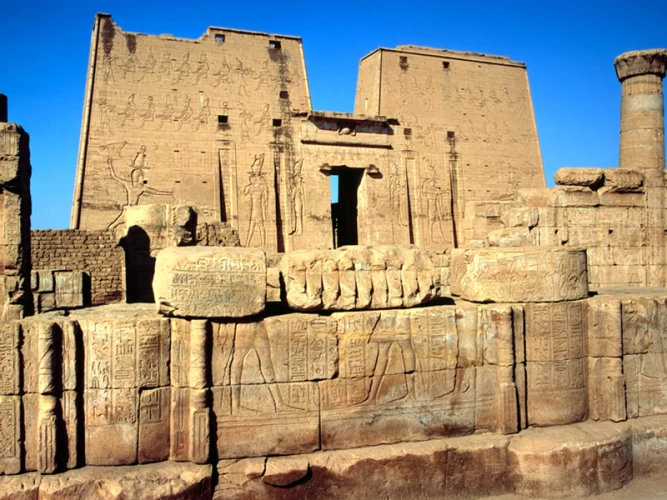
阿斯旺旅游 | 阿斯旺旅游在埃及
阿斯旺以其晴朗的天气和古老的考古遗址而闻名;对于世界各地寻求独特体验的游客来说,阿斯旺已成为一个极具吸引力的目的地。开罗旅游网(Cairo Tours)将在本文中为您提供一份全面的旅游指南,涵盖您计划阿斯旺之旅需要了解的所有细节。如果您正在寻找一次文化之旅,阿斯旺将让您参观古埃及文明的伟大庙宇,此外,如果您正在寻找内心的宁静,阿斯旺将让您通过埃及经典之旅(Egypt Classic Tours)体验这两种经历,发现这些隐藏的瑰宝。
发现阿斯旺的最佳景点和隐藏瑰宝:
菲莱神庙
菲莱神庙位于尼罗河中央的一个小岛上,是埃及最著名、最美丽的神庙之一。菲莱神庙供奉的是伊希斯女神,其历史可以追溯到托勒密时代。神庙中最令人印象深刻的是特拉扬亭、保存完好的象形文字和哈托尔神庙。在阿斯旺一日游期间,参观菲莱神庙可以让您领略埃及历史的魅力。
努比亚博物馆
重点展示传统乐器、努比亚服饰、艺术品和古代陶器,并展示 20 世纪改变该地区面貌的努比亚移民。
未完工方尖碑
这是可以追溯到古埃及历史和法老时代的古迹之一,也是法老时代工程师们令人惊叹的建筑之一。通过埃及复活节之旅,您会发现方尖碑是哈特谢普苏特女王下令建造的,也是世界上最高的方尖碑之一。没有完工的原因是方尖碑上有裂缝。
科姆-翁博神庙
科姆-翁博神庙是阿斯旺和埃及最著名的神庙之一,您可以在参加阿斯旺和卢克索之间最棒的埃及尼罗河游轮之旅的同时参观它。它位于尼罗河东岸,建造于托勒密时代,供奉索贝克和小时
阿斯旺高坝
阿斯旺高坝是一个工程奇迹,它帮助改变了埃及的基础设施和农业。这座巨大的水坝所使用的材料是吉萨大金字塔的 18 倍,建造它的目的是保护埃及免受尼罗河洪水的侵袭。游客可以参观大坝的设施,还可以参观俯瞰大坝的纪念碑,那里景色优美。在这里可以了解埃及的现代历史。
阿斯旺植物园
该植物园位于基奇纳岛上,占地 25 英亩,园内有来自世界各地的 400 多种植物。这里是远离城市喧嚣的宁静之所。您可以漫步在棕榈树林中,欣赏睡莲,还可以欣赏到许多鸟类在此栖息。在埃及复活节旅游度假期间,千万不要错过这片自然绿洲。
阿迦汗陵墓
阿迦汗陵墓(Aga Khan Mausoleum)位于阿斯旺(Aswan)对面的尼罗河西岸,是一块不为人知的宝地。它是苏丹-马哈茂德-沙阿-阿迦汗爵士的墓地。陵墓结合了法蒂玛王朝的建筑元素和现代风格,坐落在一个美丽的花园中。这里是一个宁静的精神圣地。
圣塞曼修道院
圣塞曼修道院是位于阿斯旺的另一处不为人知的宝藏。这座修道院供奉的是三世纪的圣人圣塞曼,它有一座宏伟的大教堂和两座努比亚风格的古老金字塔。从这里可以眺望贵族墓。参观这座鲜为人知的修道院可以让您探索埃及早期基督教的历史和文化。
开罗顶级旅游公司(Cairo Top Tours)的优质服务让您做好准备,在最佳埃及圣诞游期间游览阿斯旺的所有美丽景点,并在专业埃及学家的陪同下探索埃及文明的秘密。
Aswan is the land of gold, the land of good people. On its land, there are many different civilizations and cultures, and its warm, stable weather is unparalleled in the winter. With all these elements and others, Aswan has become a tourist destination that attracts the attention of the world.
Enjoy a wonderful vacation in the far south of Egypt, where these places vary between cultural, historical, and recreational.
Aswan is one of the beautiful and peaceful destinations in Egypt and lies farthest in the south of the country on the River Nile. With dramatic scenic beauty, ancient history, and an actively living Nubian culture, it is the kind of retreat no traveler ever forgets.
History
Pharaonic Egypt
The importance of this region emerged during the Old Kingdom, securing the southern border. It served as a center for armies when the kings of the Middle Kingdom attempted to extend their power southward. It was particularly important in the Egyptian war to drive out the Hyksos.
Ptolemaic Egypt
During the Ptolemaic era, the island of Philae—the seat of worship of the goddess Isis—received much attention, and they completed its great temple.
Roman Egypt
During the Roman era, temples were built in the ancient Egyptian style to attract the Egyptians. Emperor Trajan built a small temple on Philae Island.
With the spread of Christianity, it became the official religion in the fifth century AD, and Egyptian temples were transformed into churches.
The Islamic Era
Islam then spread from its inception; evidence written in Kufic script dating back to the early first century AH has been found.
Aswan flourished during the Islamic era, becoming a route to Azab on the Red Sea coast in the 10th century AD, from where ships sailed to the Hijaz, Yemen, and India.
During the sixth and seventh centuries AH, it was a significant cultural hub with three schools, the oldest of which were the Aswan School, Saifiya School, and Najmiya School in Aswan.
Modern Era
Muhammad Ali established the first military school in Egypt there in 1837.
Aswan is a gateway to the most famous historical sites of Egypt. Among its prime sites is the Philae Temple, which honored goddess Isis. The temple rests on an island with the Nile in the background. However, the historical value of the temple pales in front of its scenic beauty. The glory of the temple and its legends are rekindled during the Sound and Light Show at nightfall.
The Unfinished Obelisk, another interesting site, gives credit to the awe-inspiring stone craftsmanship of the ancient Egyptians. To the north lies the Temple of Kom Ombo, a unique temple dedicated to the two gods, Sobek and Horus. Abu Simbel's stunning temples are a must-have for any visit to Aswan. These colossal monuments carved right into the mountains speak for the architectural genius of Ramesses II and stand as a testament to his reign.
In the charming south, the river differs in form and subject from its nature in any other governorate in terms of purity and color, which, along with the color of the sky, form an artistic painting created by the Creator. Therefore, the Nile in the south forces you to visit it more than once.
The Nile takes on a peaceful beauty in Aswan. A ride on a felucca on its calm waters is one of the most suitable means of taking in the natural beauty of the location, especially when the sun sets into the riverbanks.
There are contemporary marvels that add to Aswan's beauty. The Aswan High Dam is an engineering marvel that not only controls the Nile waters but also created Lake Nasser, one of the world's largest artificial lakes. You can visit lesser-known gems from here like the Kalabsha Temple, hidden by the lake shores.
In Nubia, you'll find all the comforts, tranquility, and clear weather, making it an unparalleled eco-tourism destination in the far south of Egypt. As you set foot in Nubia and its villages, you'll find Nubian houses designed in the shape of domes, in cheerful colors, overlooking the Nile... You'll find women wearing the traditional Nubian gergar, and the markets are filled with handcrafted products and eco-friendly items, just as their fathers and grandfathers did.
Some of the murals tell the story of the amazing generosity and hospitality of the Nubian people, and their refined treatment of foreigners visiting their country. Enjoy the picturesque environment in the villages overlooking the Nile River, and spend a pleasant time surrounded by pure and attractive nature, generous hospitality, and the preparation of distinctive drinks and foods unique to the Nubian people, inherited from their fathers and grandfathers.
Aswan is Nubia's cultural capital, a city that is steeped in history and tradition. You should go to a Nubian village, where you can feel the hospitality of the people, the colorfulness of their houses, and their rich heritage. Taste traditional Nubian food, hear their distinct music, and see handmade handicrafts that narrate their history. It's something that stays with you.
One of Aswan's oldest marketplaces, the old tourist market is becoming more well-known and respected over time.
It's the biggest, busiest, and most dynamic commercial market. Aswan is full of tourist and natural attractions and tourist attractions, most notably the Tourist Market Street, which includes a large number of bazaars and markets specialized in selling gifts and souvenirs that carry the traditional style of the people of Aswan, in addition to handmade products such as accessories, porcelain, and clothes, as well as leather products and antiques, and selling local products such as clothes, handicrafts, ceramic utensils, gifts and souvenirs. There are also a lot of eateries on Aswan's Tourist Market Street. This is on top of leather goods, textiles, and fragrance items.
Aswan Market is a vibrant destination where the scent of spices fills the air and the eyes are treated to local handicrafts. Explore the souk to find treasures like handcrafted jewelry, colorful Nubian fabrics, and scented hibiscus tea—a local favorite and wonderful souvenir.


















